Receptacles are what are commonly referred to as outlets, but the correct term is receptacle. The definition of “outlet” in the NEC is a point on the wiring system where current is taken to supply equipment, i.e. a lighting fixture box or a receptacle. Both are “outlets.” Receptacles take a lot of physical use, and are a more temporary electrical connection as they rely on inserting and withdrawing plugs to complete the circuit. Additionally, older style 2-prong receptacles are still in widespread use, and often are adapted or even updated in an unsafe manner. The Standards require that we test a representative sampling of receptacles.
Inspect all readily-accessible receptacles using your 3-prong GFCI tester. Connect a 2-to-3 prong adapter when necessary. Report all damaged, inoperative, or mis-wired receptacles, scorch marks, missing or damaged cover plates, loose installations, and intermittent connections. The use of installed 2-3 prong adapters must be noted. Test all GFCIs after confirming that you are not shutting off a critical system, e.g. a freezer, that you can’t reset. AFCIs should only be tested once you are sure they will not shut off an important device such as an alarm clock or computer.
The receptacle is inoperative. The cause cannot be determined at the time of the inspection. Hire an electrician for an evaluation and to make repairs as needed.
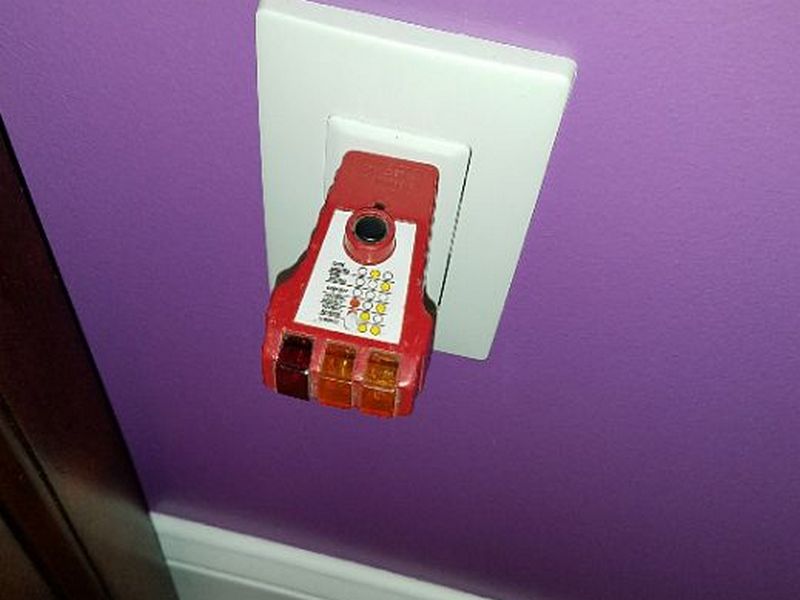
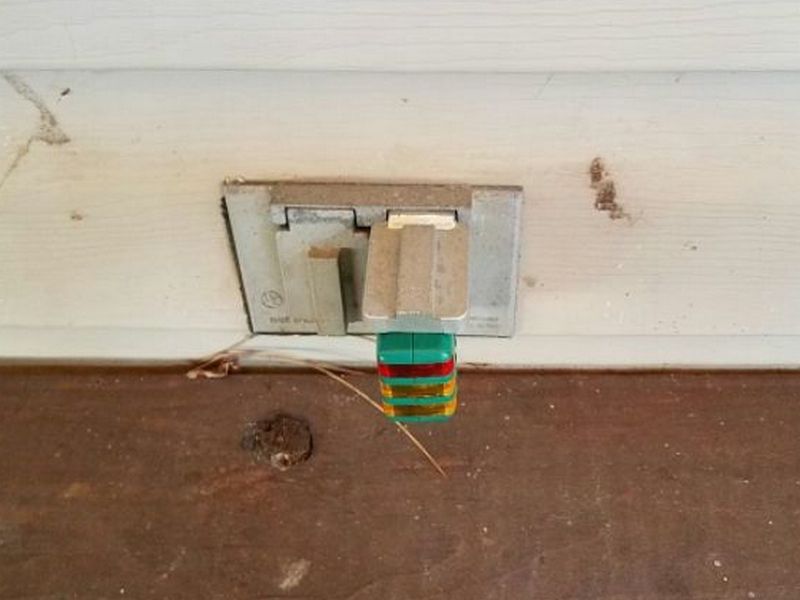
The receptacle is damaged. This is a safety hazard. Hire an electrician to replace the receptacle.
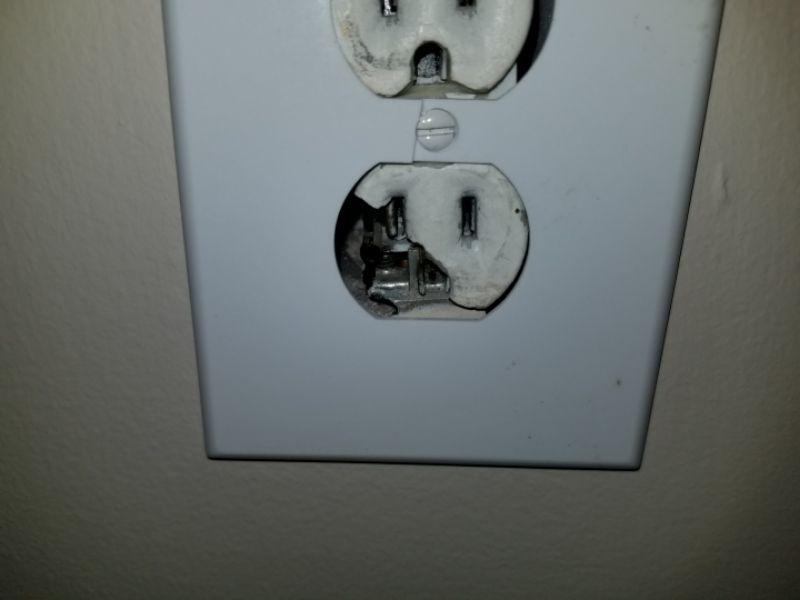
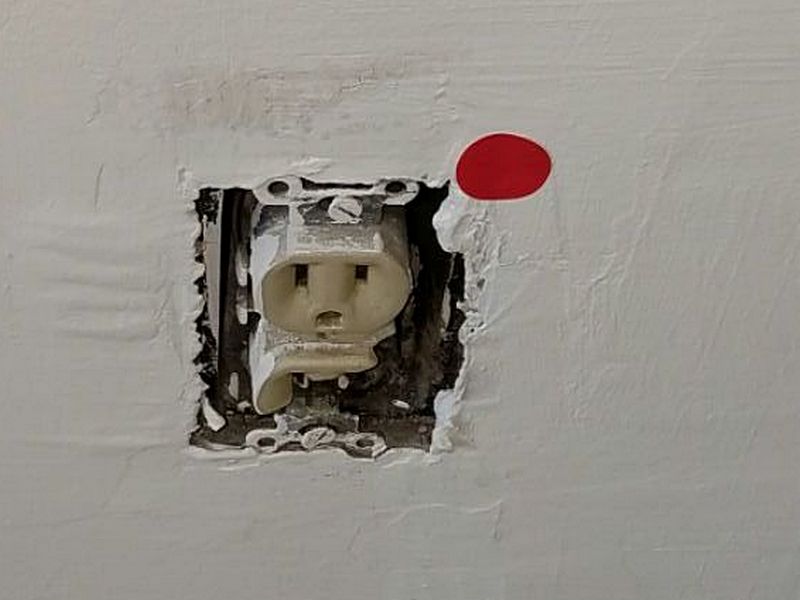
The receptacle is loose in the wall or in its junction box. This is a safety hazard that can damage or loosen the wire connections. Hire an electrician to make required repairs.
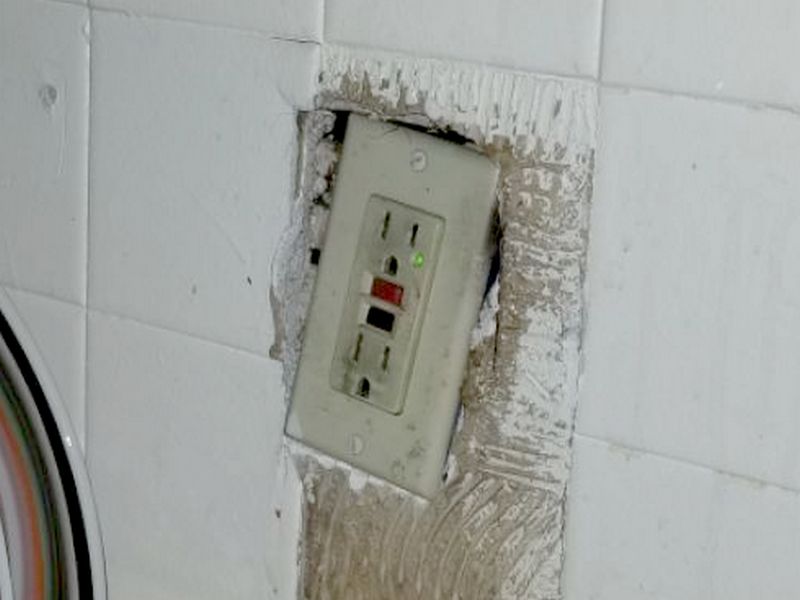
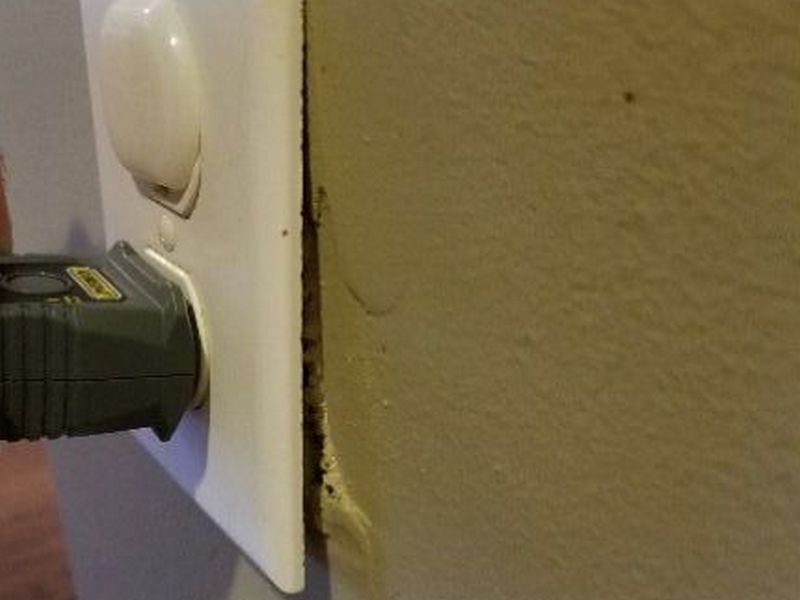
The receptacle is not mounted flush with the wall surface. This is a fire and shock hazard. Hire an electrician to replace the receptacle.
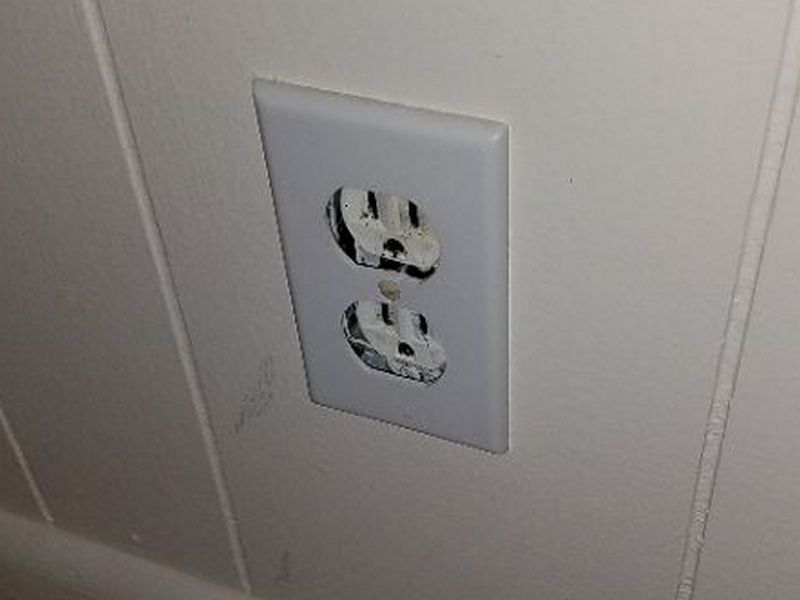
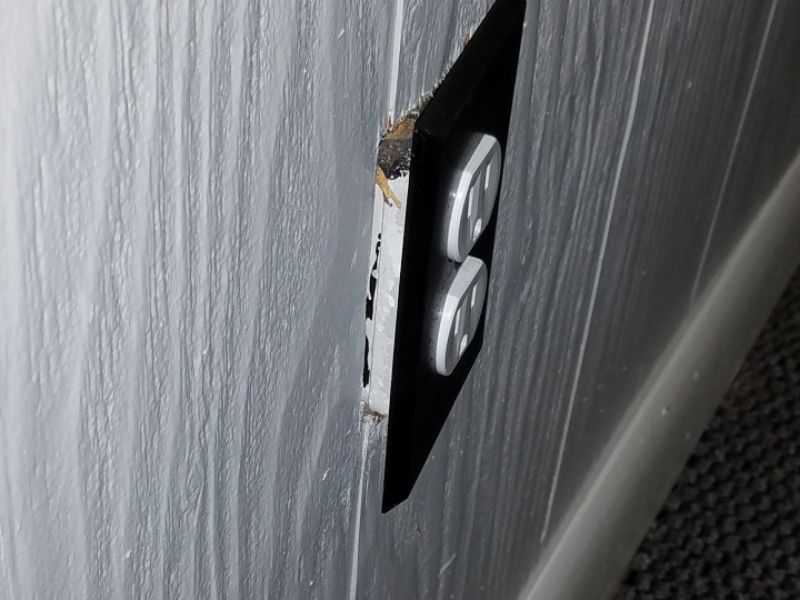
The receptacle is painted. This can affect proper electrical contact and is a safety concern. Hire an electrician to replace the receptacle.
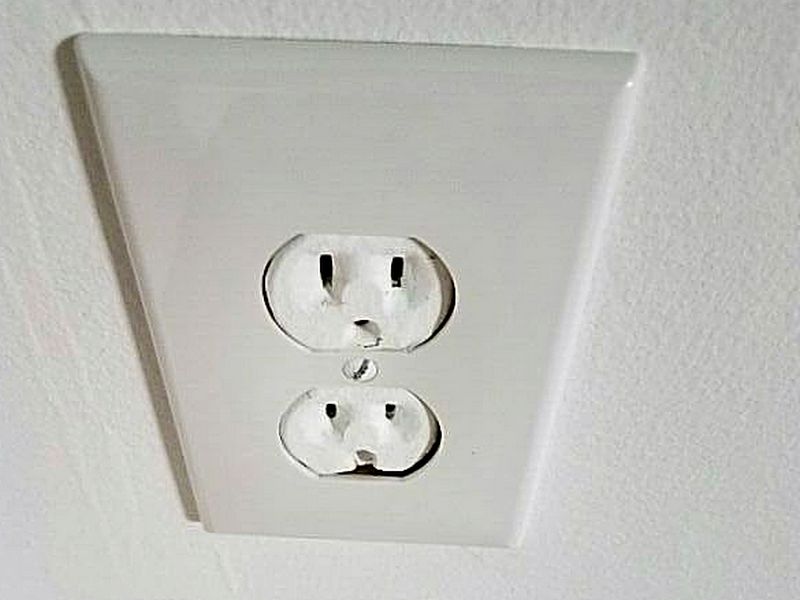
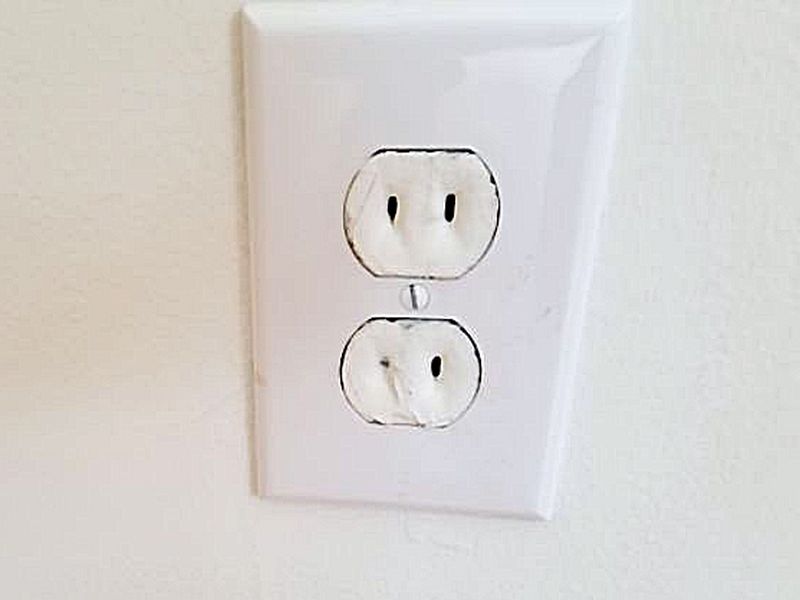
The receptacle is worn or loose. Older receptacles that have been heavily used can become defective and prevent adequate electrical connection. This is a fire and shock hazard. Hire an electrician to replace the receptacle.
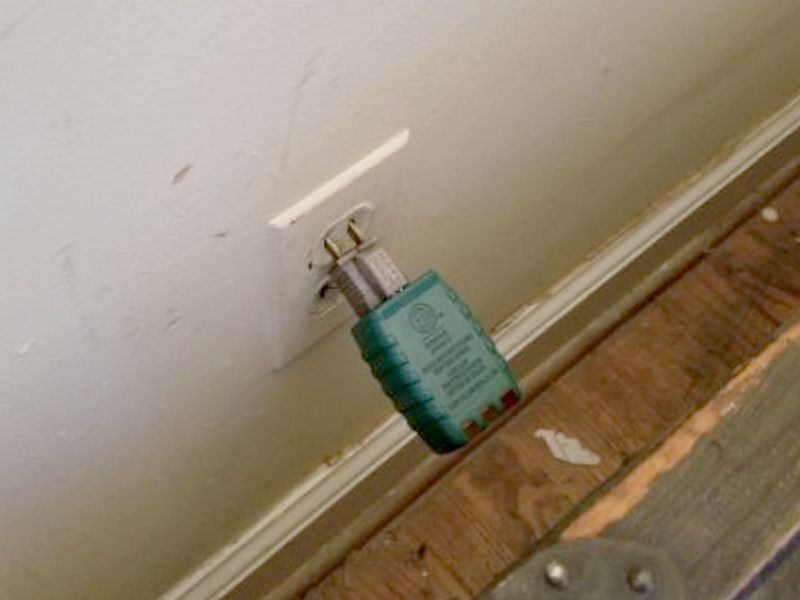
There is an ungrounded 3-prong receptacle. This is a safety hazard that gives the false appearance that there is proper electrical protection. Hire an electrician for an evaluation and to make repairs as needed.
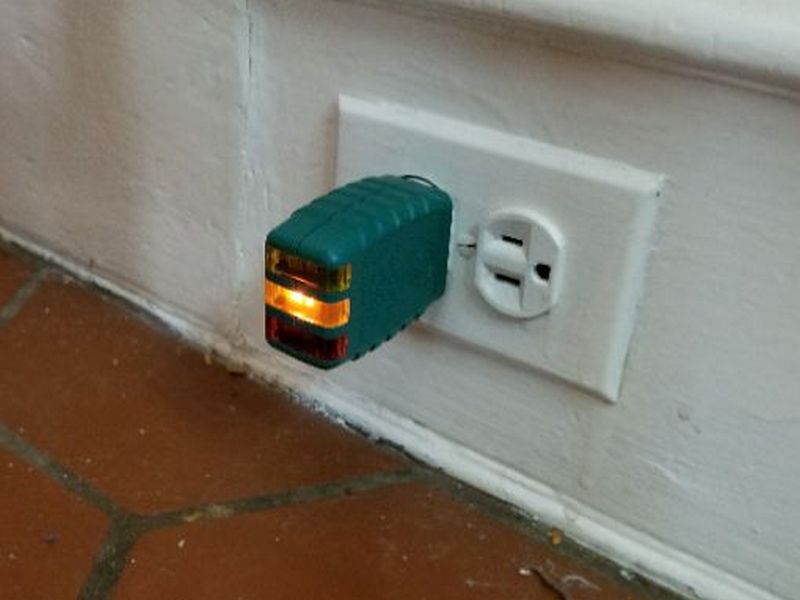
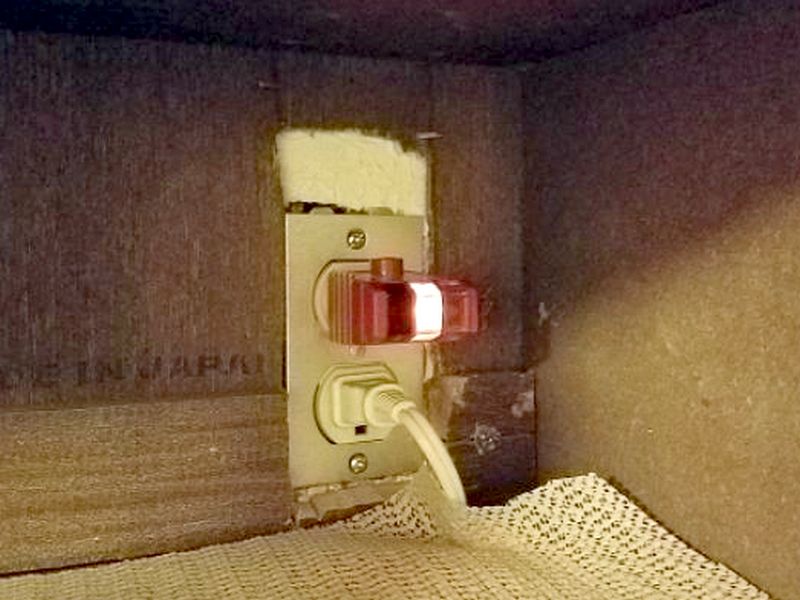
The receptacle has reversed polarity. This is a shock hazard that can also damage devices that are plugged in. Hire an electrician to make required repairs.
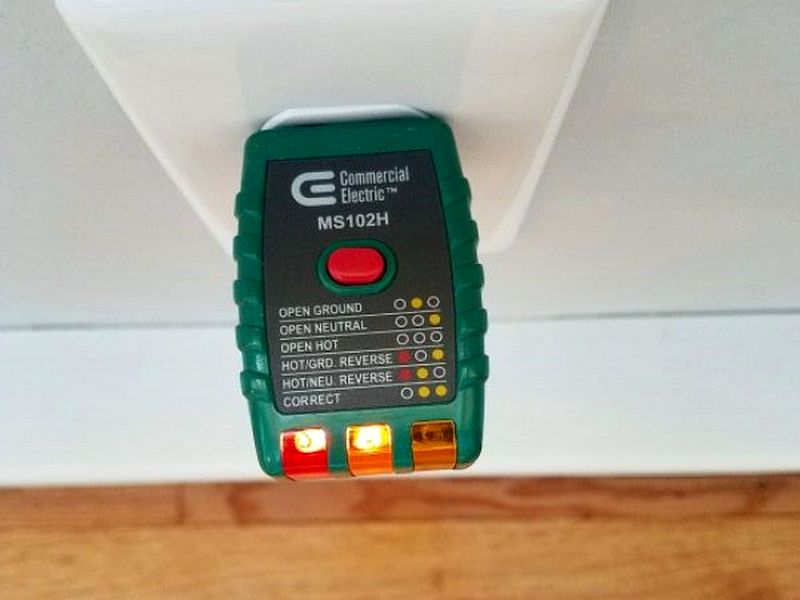
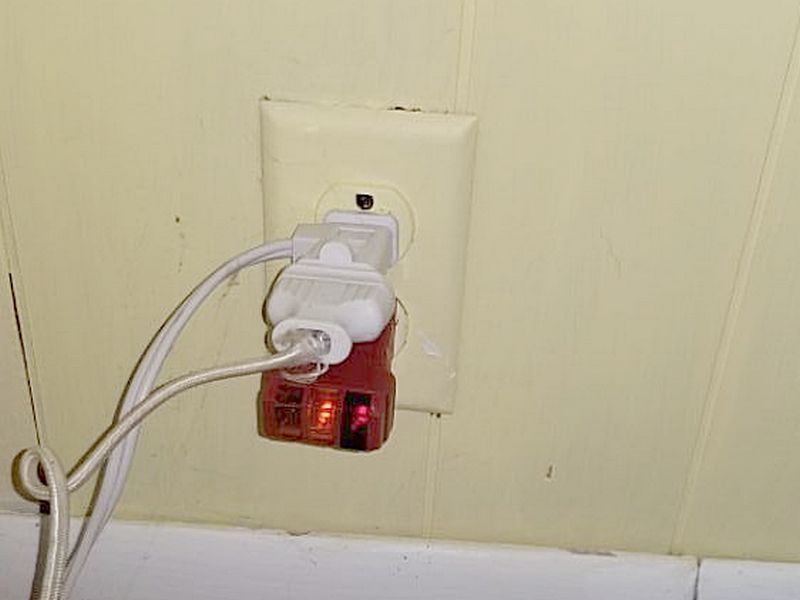
The receptacle has an open neutral connection. This is a shock hazard. Hire an electrician to make required repairs.
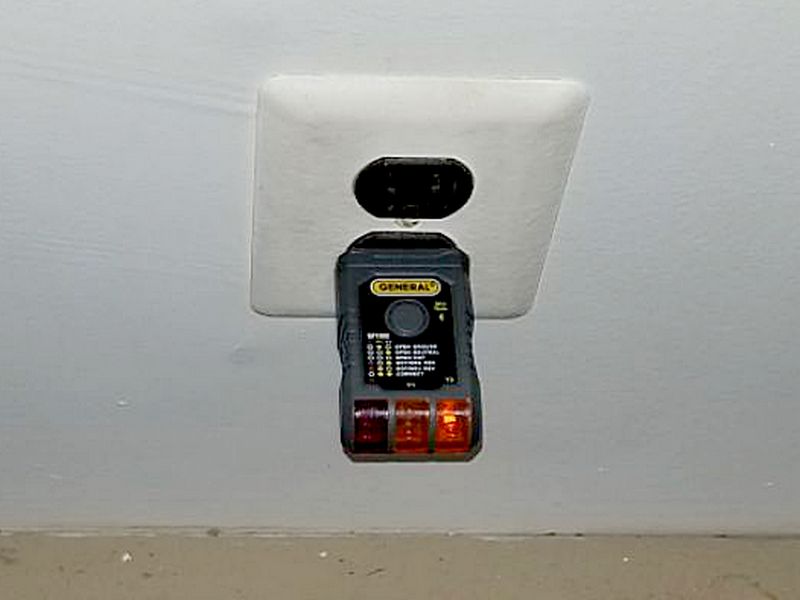
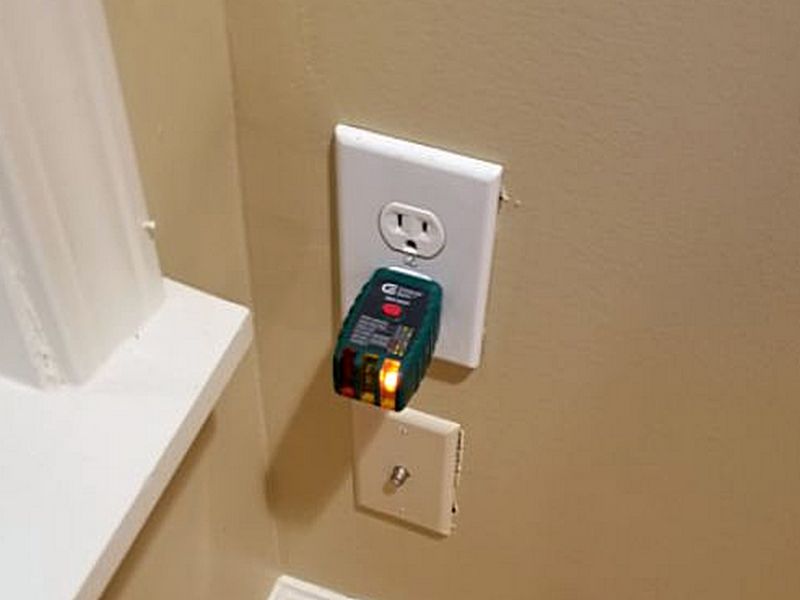
The receptacle has a broken pin in the slot. This is a shock hazard. Hire an electrician to make required repairs.
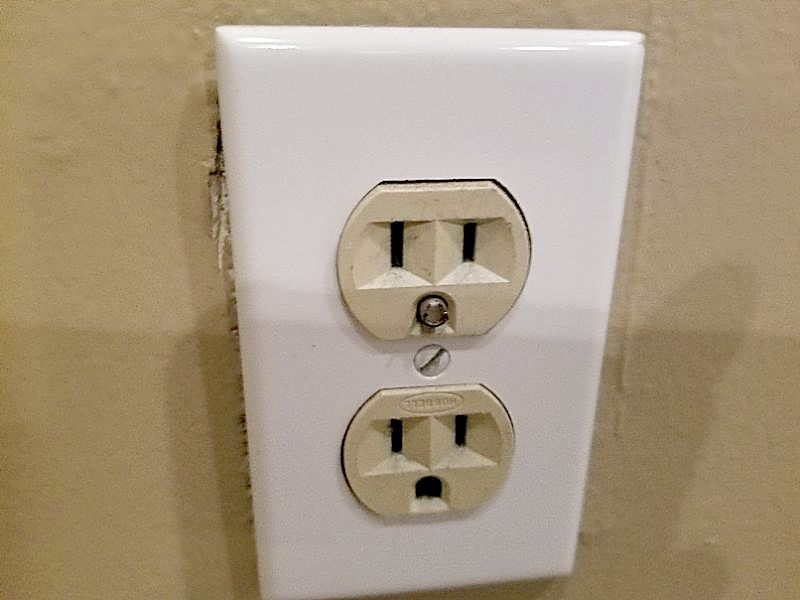
Three prong adapters are in use at two-prong receptacles. This defeats the purpose of the third prong, which is to prevent shocks when the appliance is defective. Hire an electrician to make required repairs.
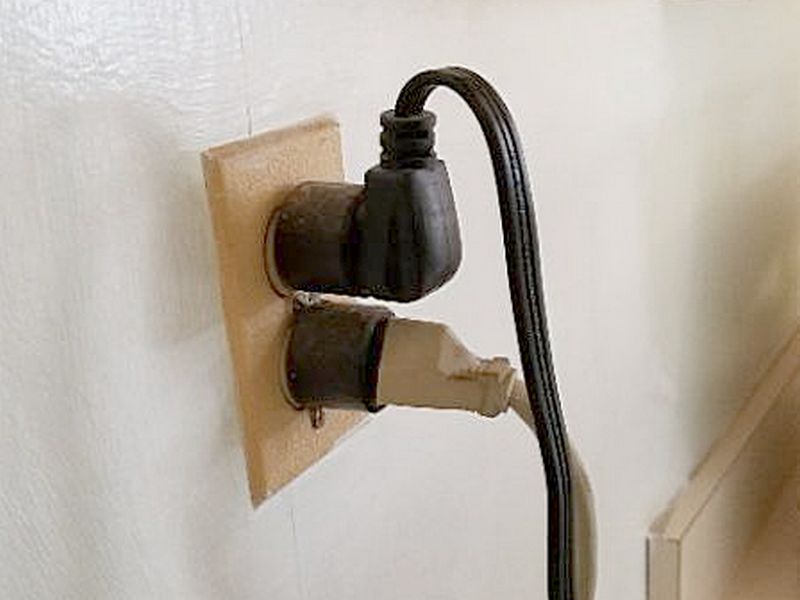
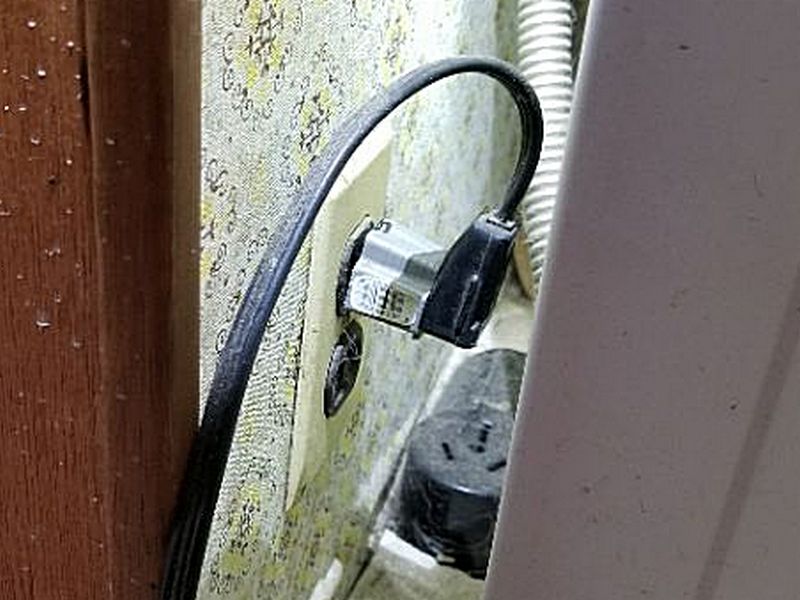
The receptacle shows signs of overheating. This indicates a potential problem with the circuit or the receptacle. Hire an electrician for an evaluation and to make repairs as needed.
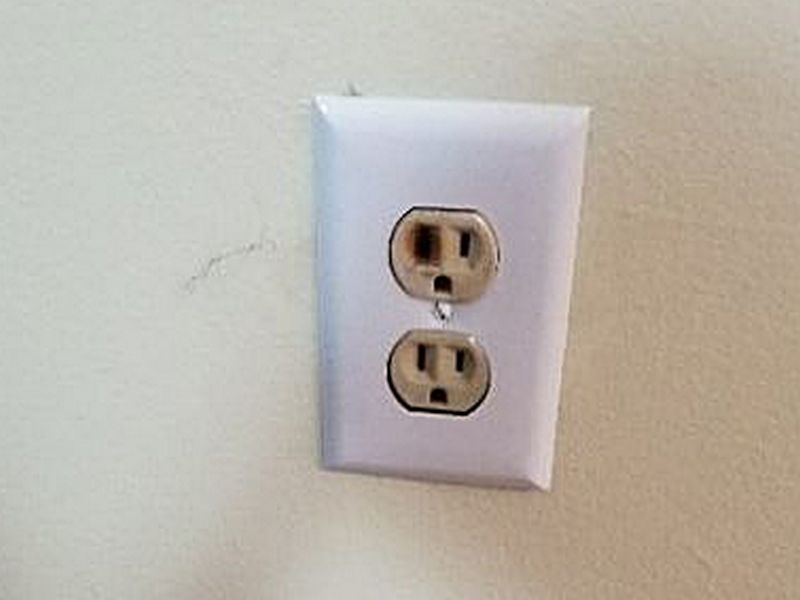
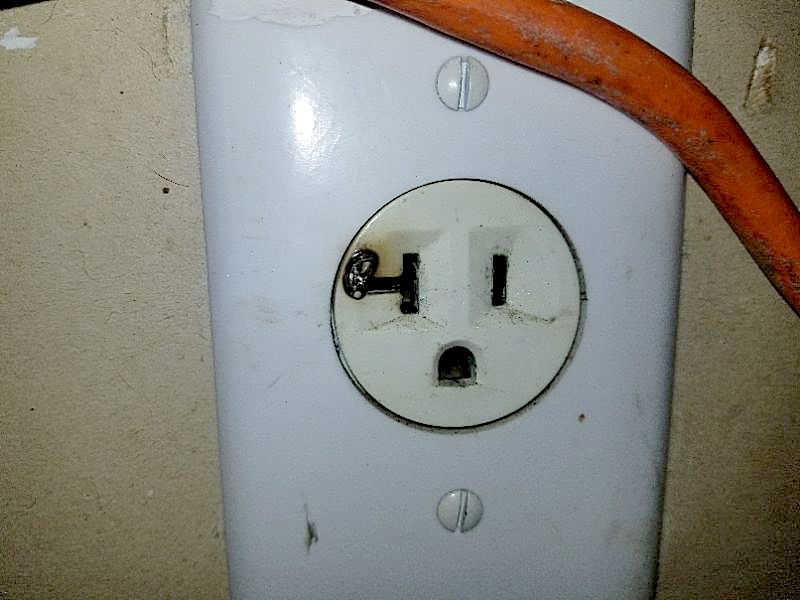
Before testing any GFCI receptacle or downstream protected receptacle, ensure that you will be able to reset the device. Sometimes downstream receptacles in garages are served by a GFCI that is not accessible. If that circuit powers a freezer the result could be an expensive loss of food.
Most adopted code models allow a 2-prong receptacle to be replaced by a GFCI receptacle. GFCI receptacles DO NOT require a 3rd. pin ground connection to operate correctly. However, your tester generally will not function properly in an ungrounded GFCI. Additionally, any such ungrounded GFCI receptacle must be labeled “No equipment ground.”
There is a standard receptacle installed in a location that currently mandates a GFCI device. While this may not have been required at installation, it is a safety hazard. Hire an electrician to replace the receptacle.
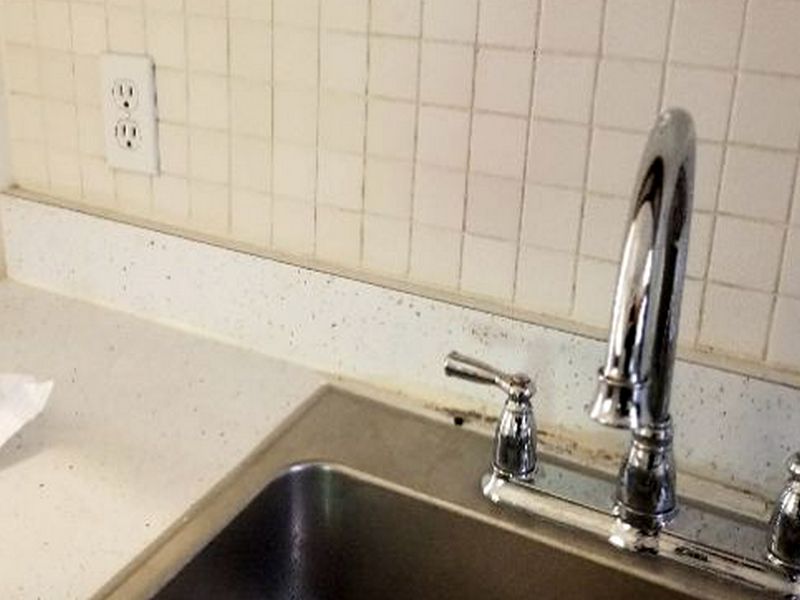
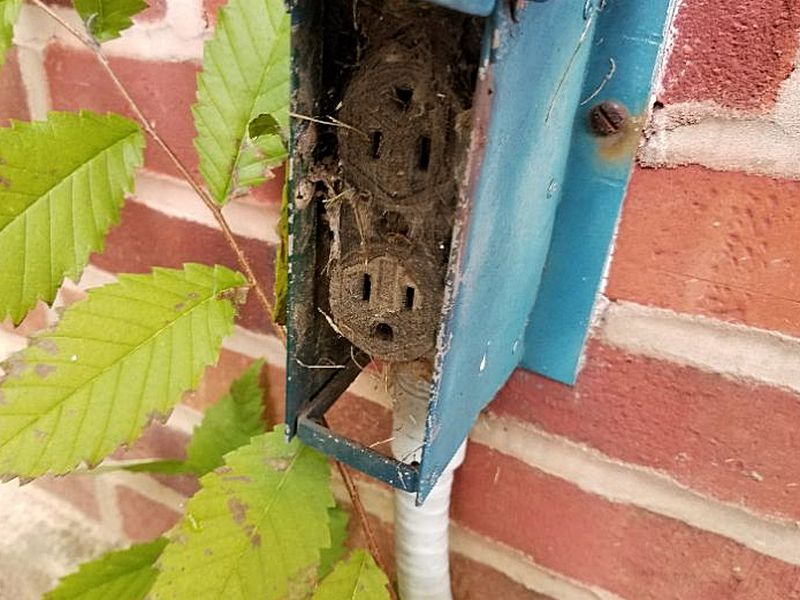
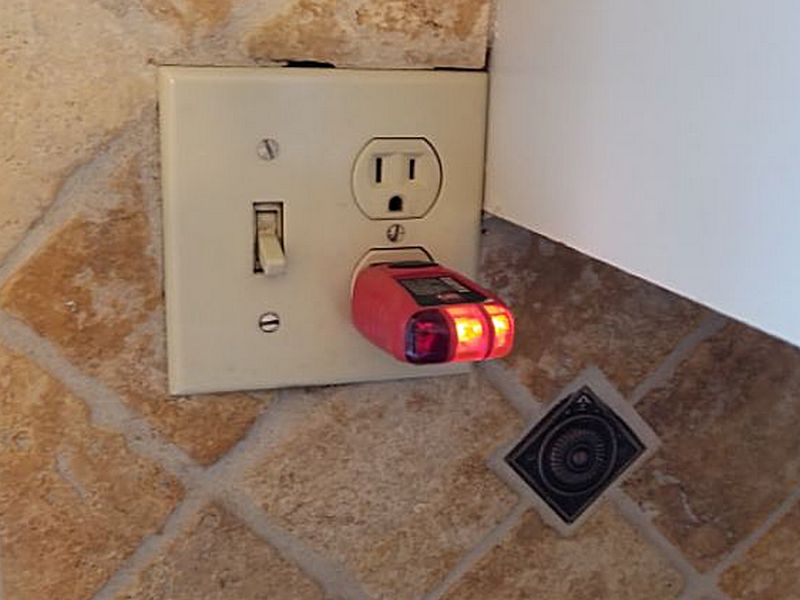
The GFCI receptacle has power, but it doesn’t trip when the test button is pushed. This is a safety hazard. Hire an electrician to replace the receptacle.
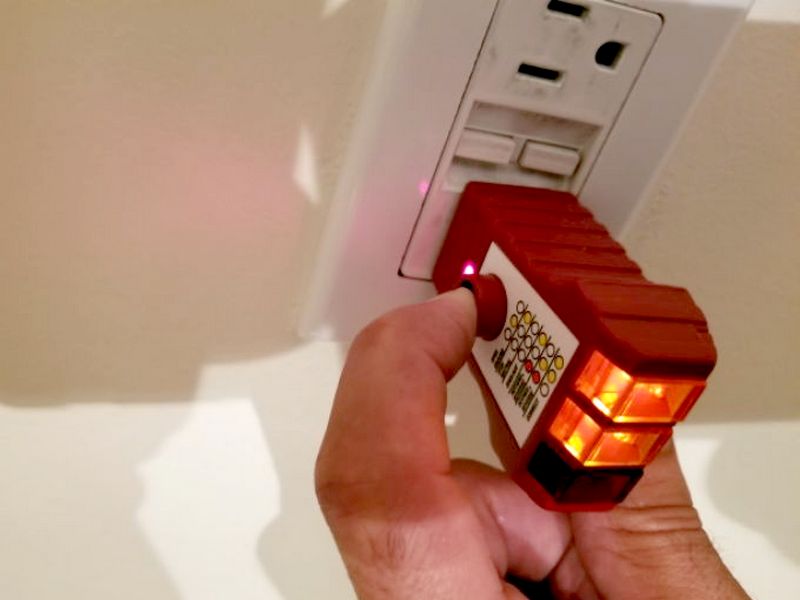

The electricity at the GFCI receptacle remains on after the test button has been tripped. This is a safety hazard. Hire an electrician to replace the receptacle.
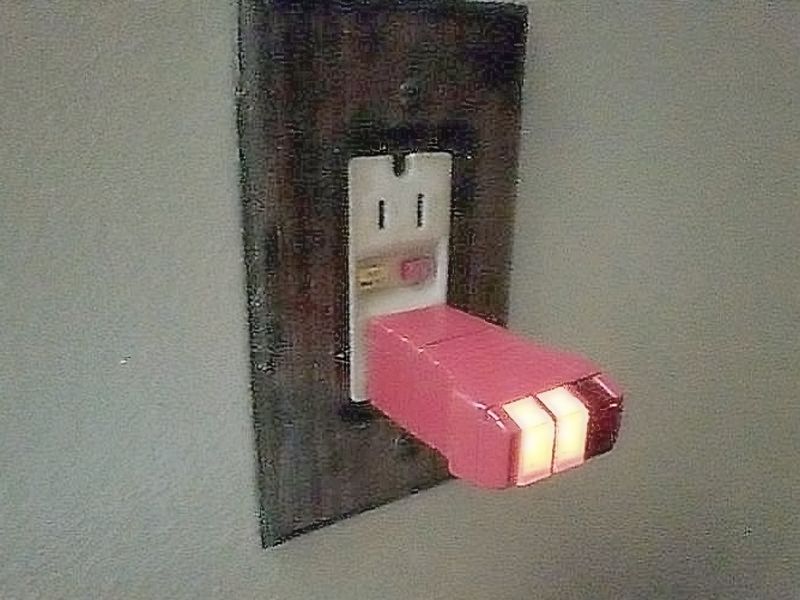
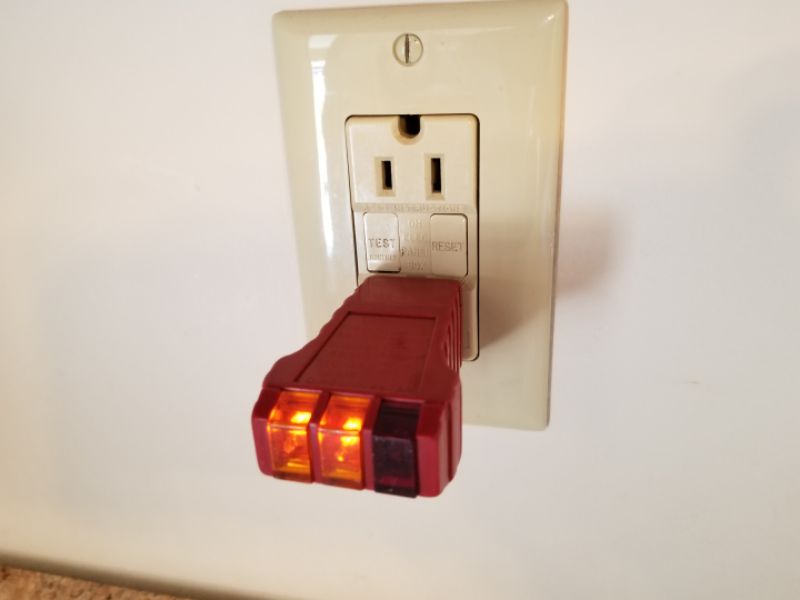
The GFCI receptacle will not reset after testing. The circuit will remain de-energized. Hire an electrician to replace the receptacle.
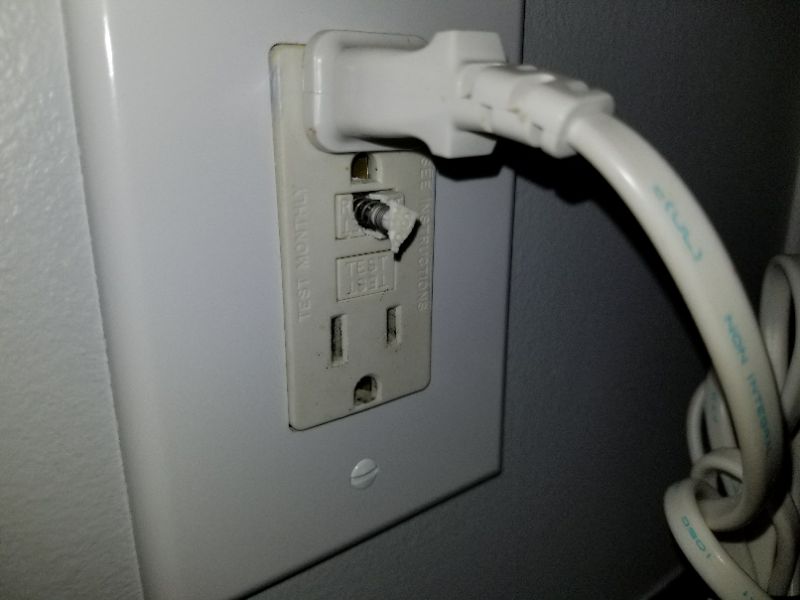
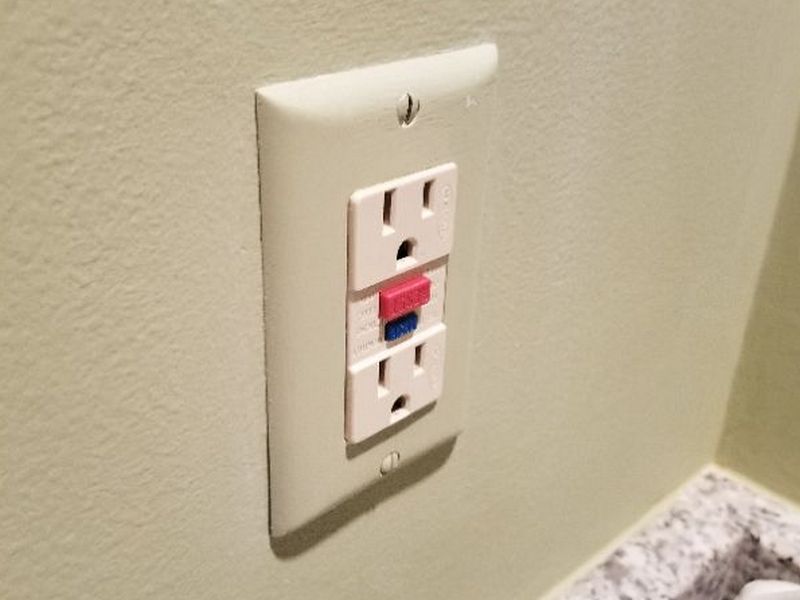
The receptacle is missing a cover plate. Missing covers are a shock hazard. Replace the cover plate.
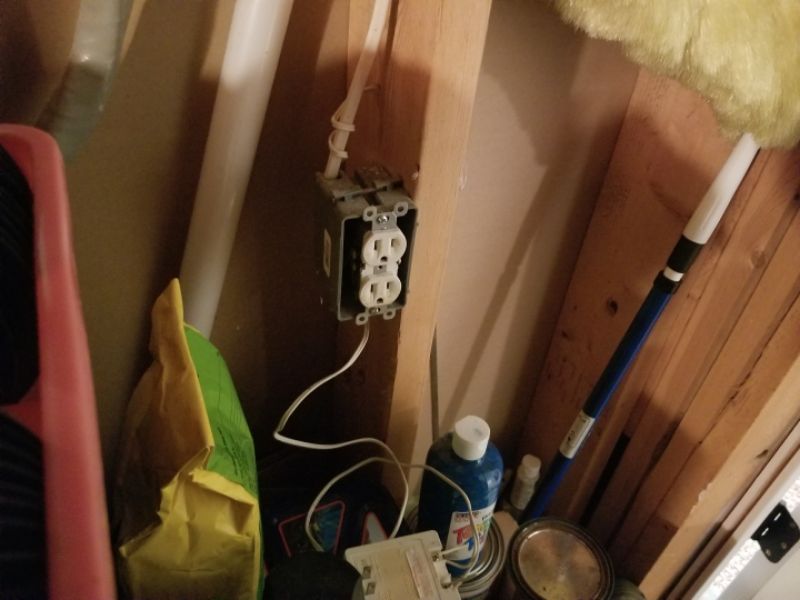
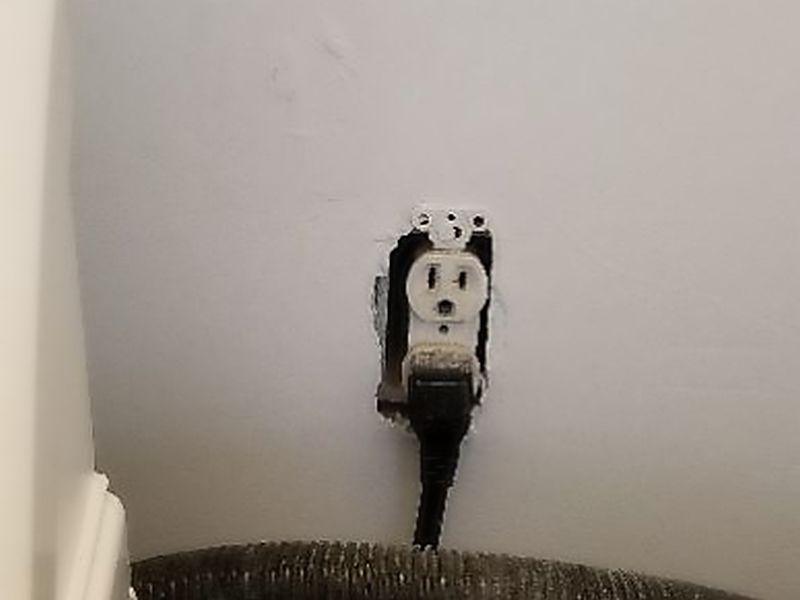
The receptacle’s cover plate is damaged. Damaged covers are a shock hazard. Replace the cover plate.
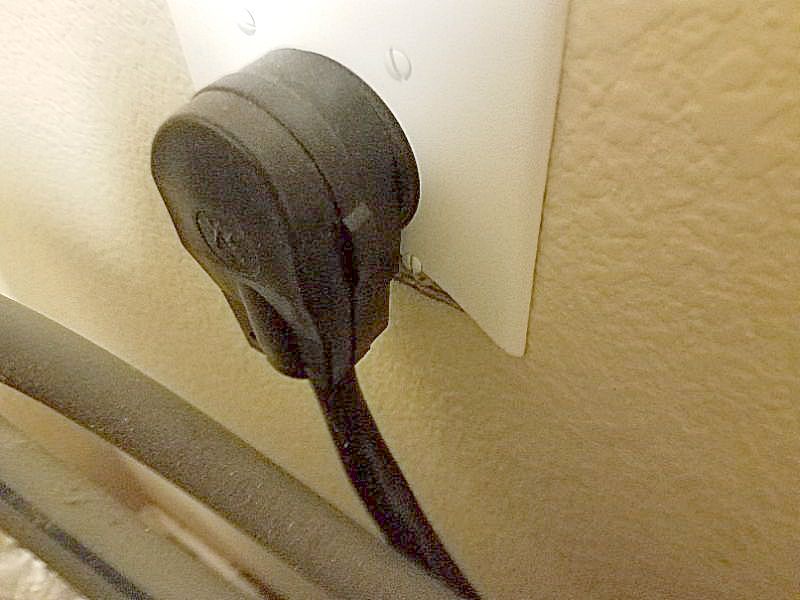
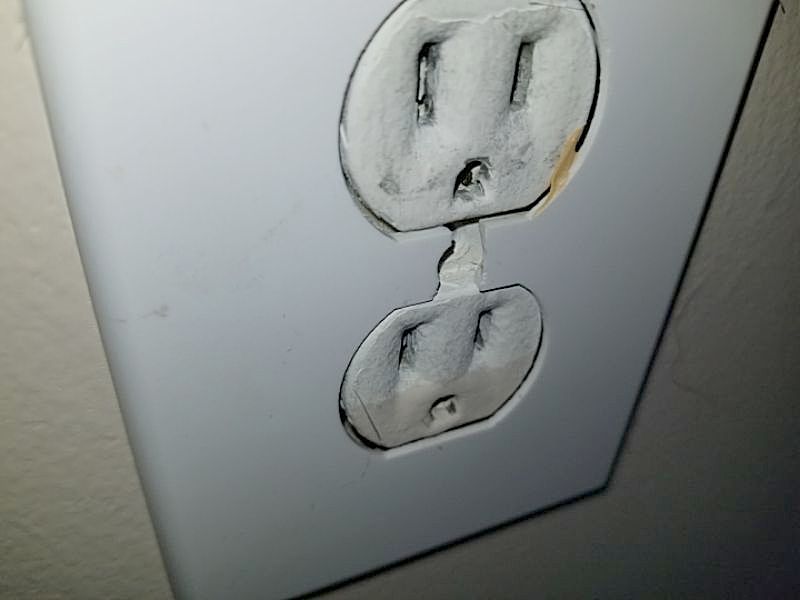
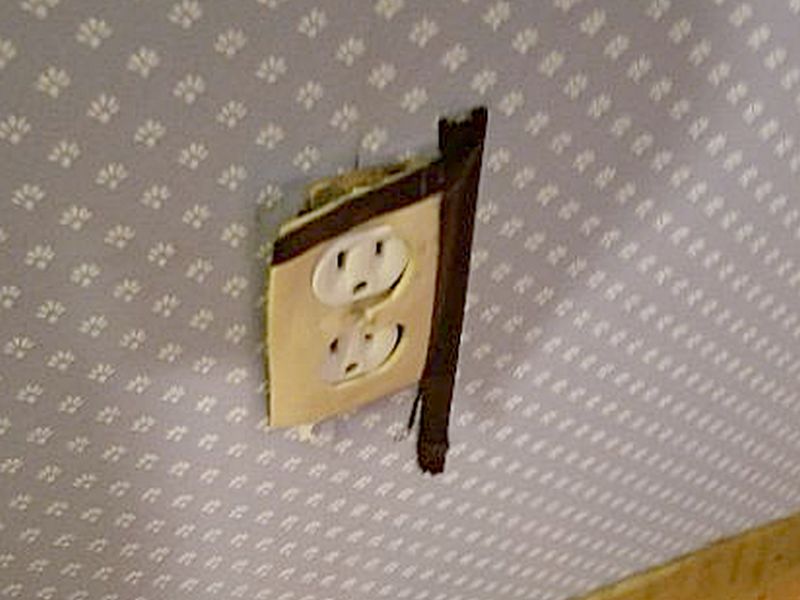
The receptacle is in a wet area without a weather cover. This is a safety hazard. Install a weather cover.
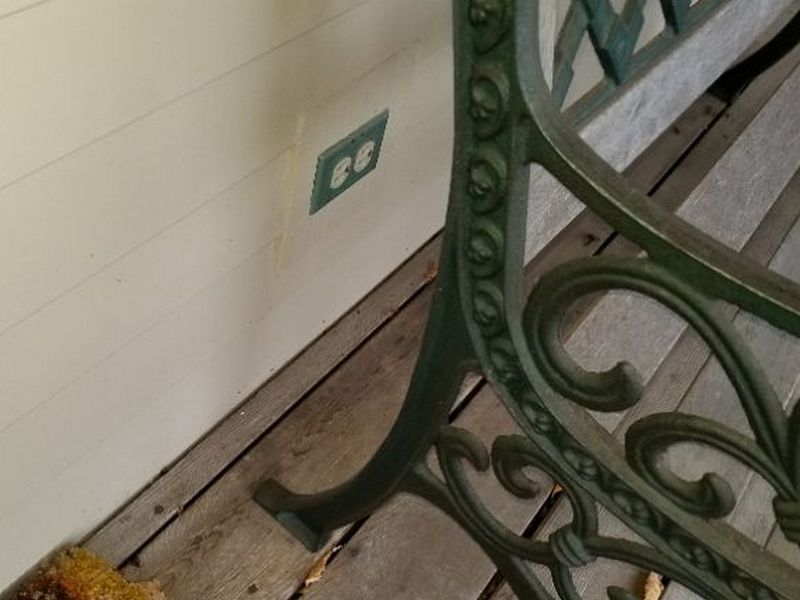
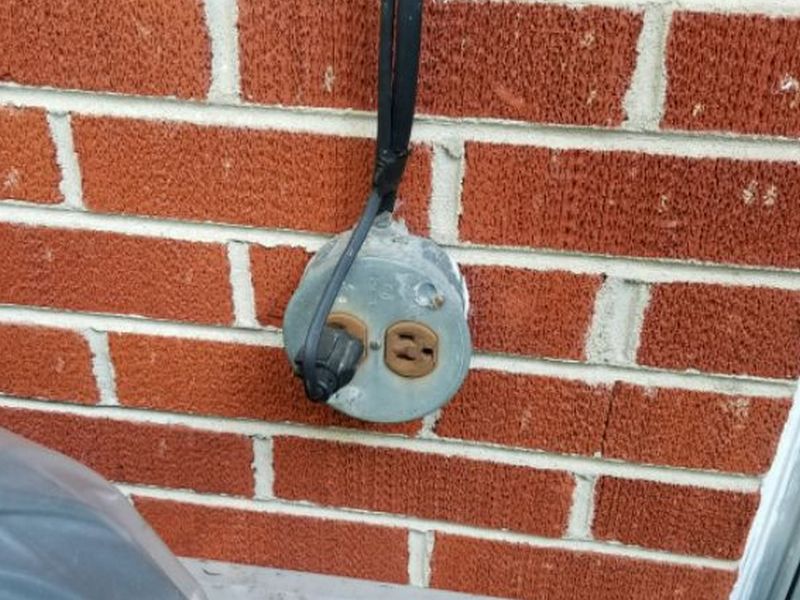
The receptacle is in a wet area with a damaged weather cover. This is a safety hazard. Replace the cover.
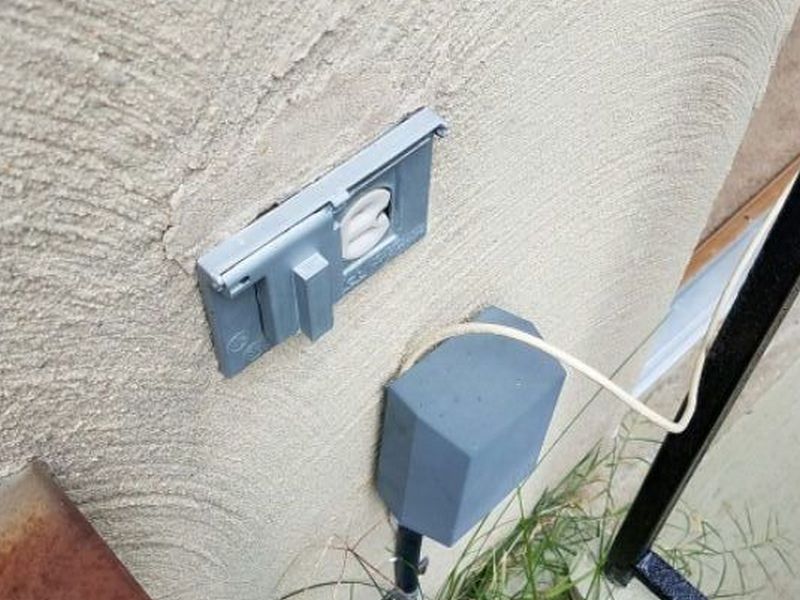
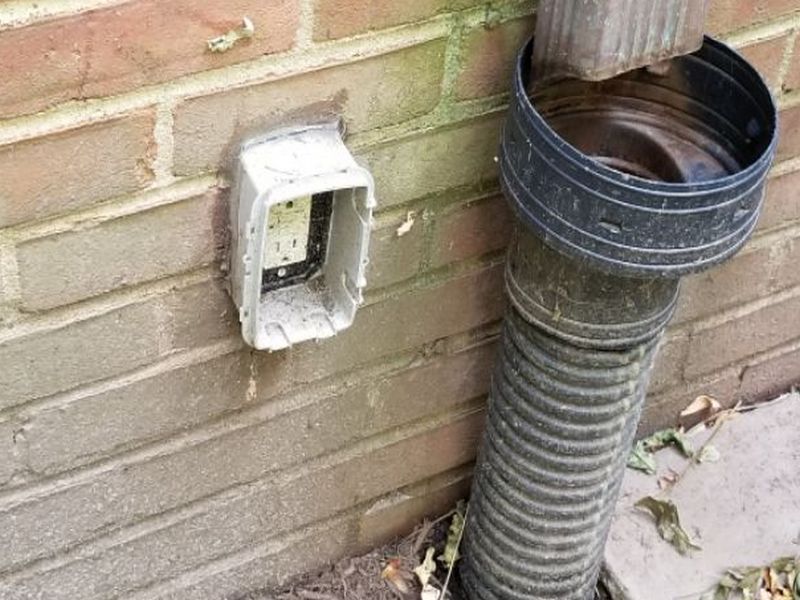
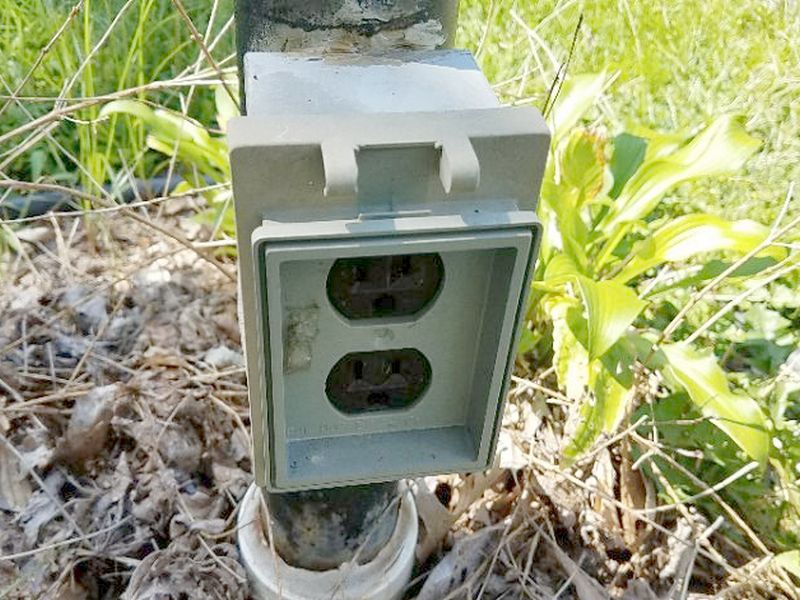
The exterior receptacle weather cover is not a “full exposure” cover. This will not safely protect the receptacle from water penetration when devices are connected in an ongoing basis. Install or replace the weather-rated cover.
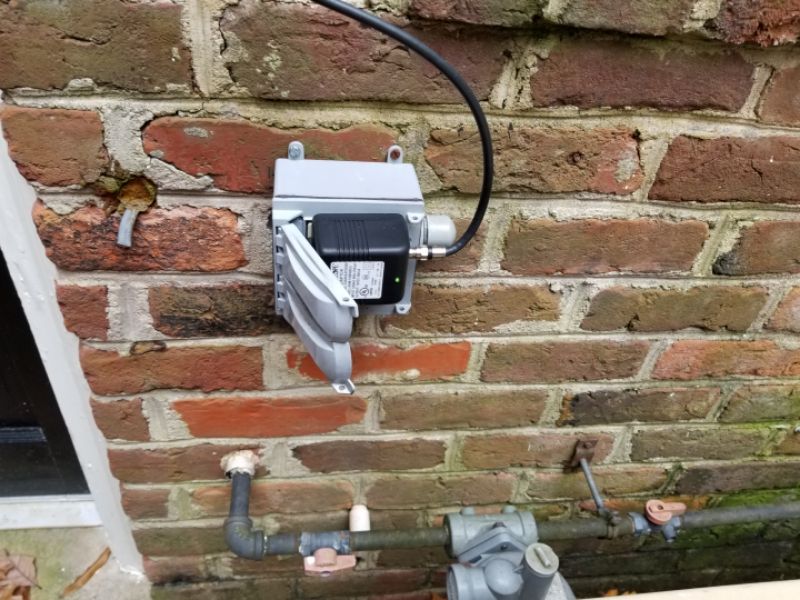
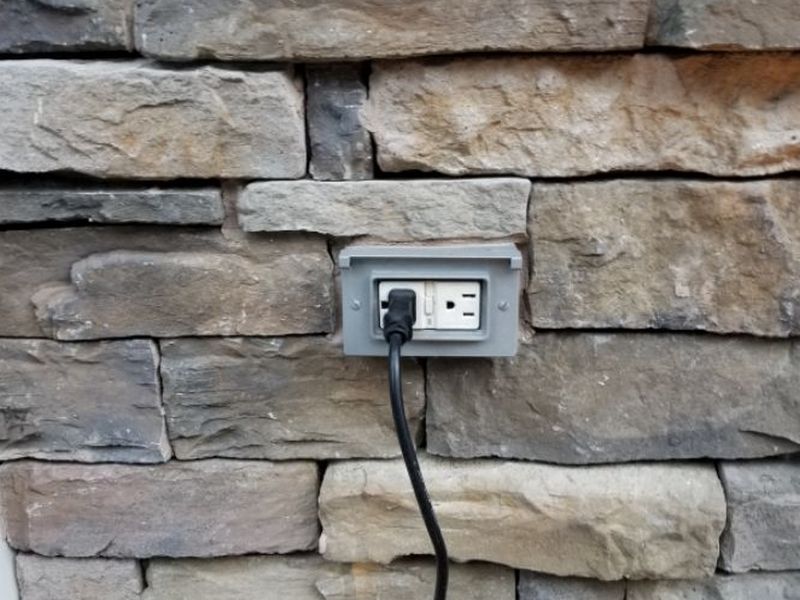
There is an receptacle installed in the floor without an appropriate weight bearing cover. This is hazardous as chair legs, table legs, or heels can break through the cover into the live contacts. Install a weight-bearing floor cover plate.
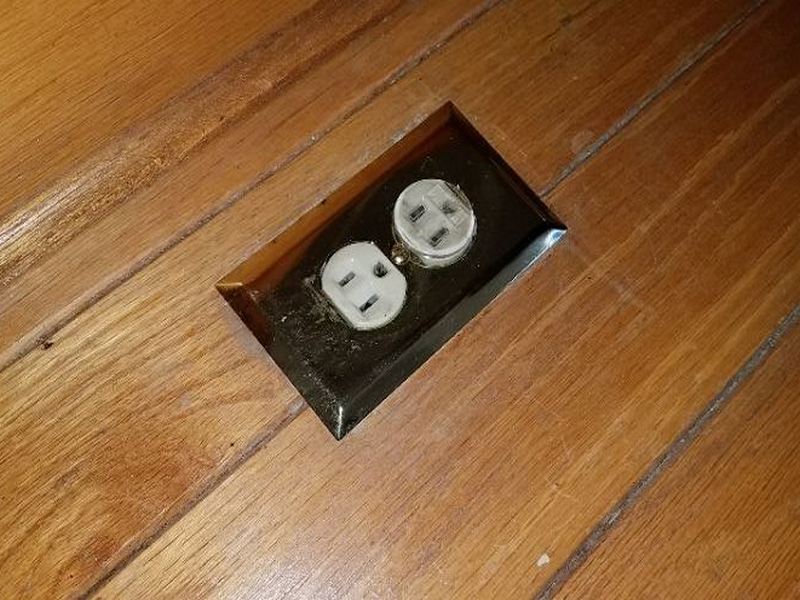
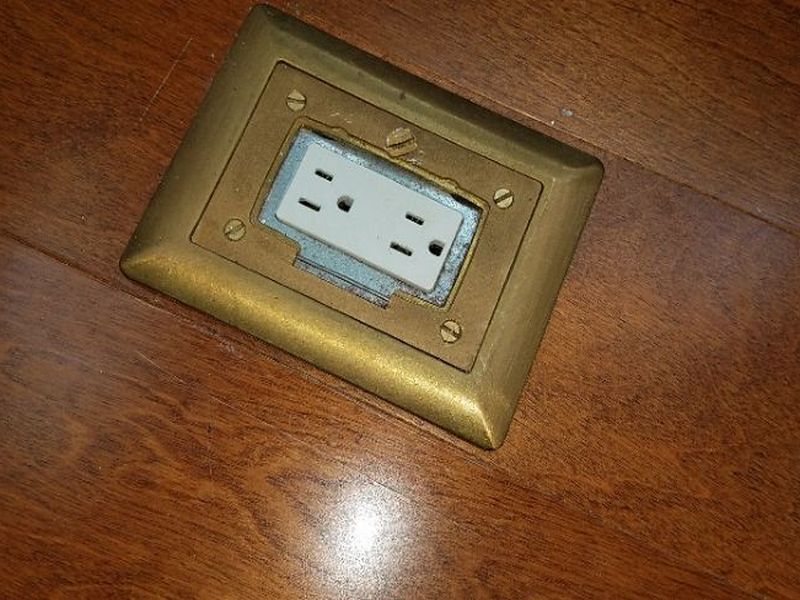
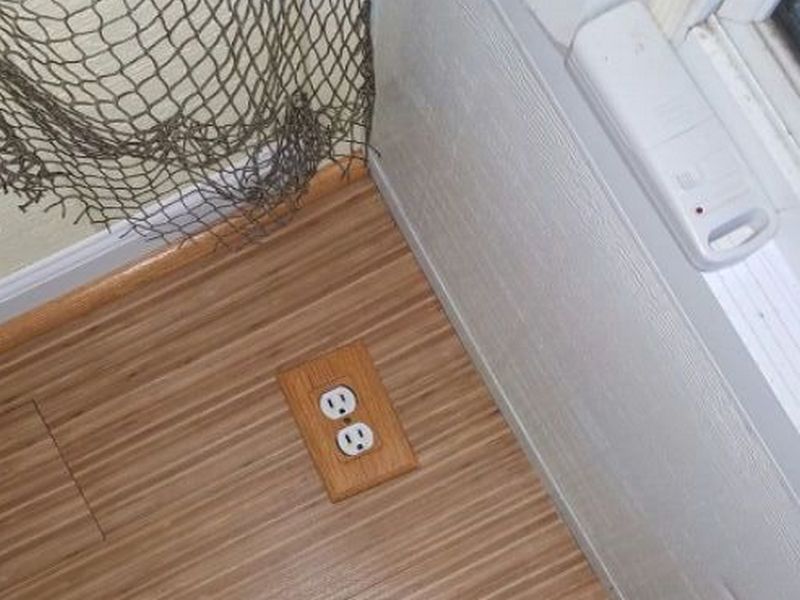
We are required by the SOP to inspect a “representative sampling” of electrical receptacles. This inspection is visual, and is also performed using a receptacle tester. We use a tester in both “regular” and GFCI receptacles.
There are many different testers in use.
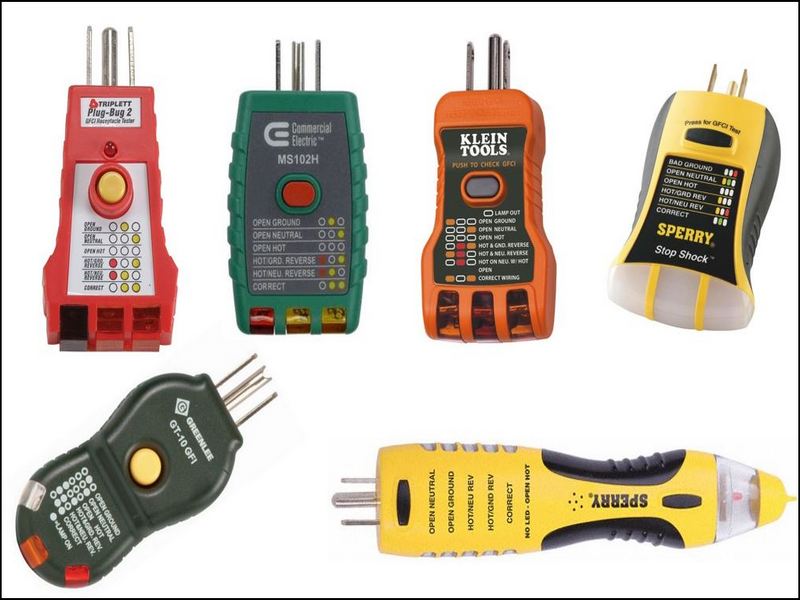
The various testers use different light combinations to indicate specific conditions. It is essential that you read your device’s legend and understand what it’s telling you.
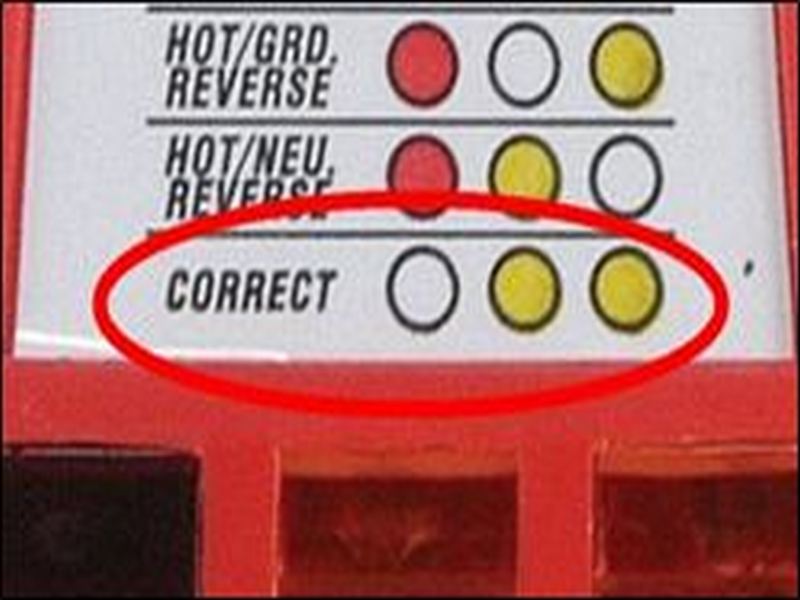
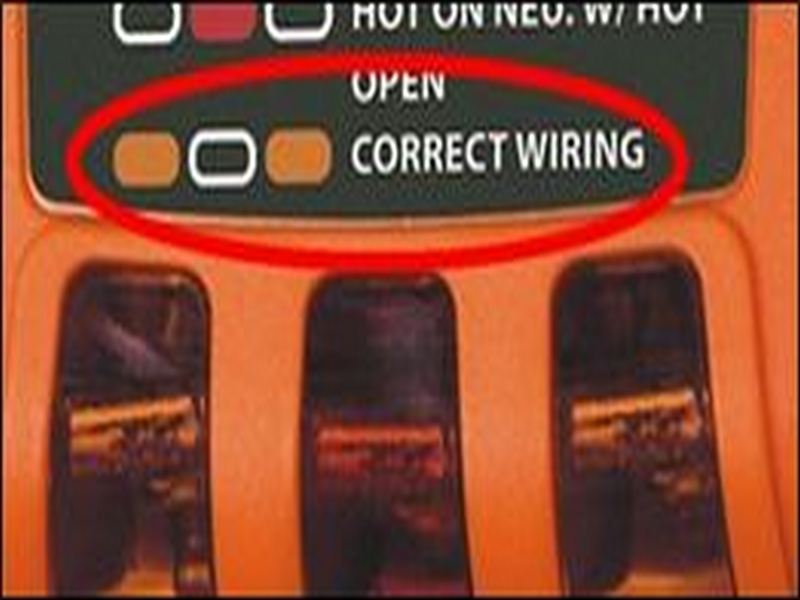
Testing GFCI Receptacles
Insert the tester to evaluate the receptacle. You then press the tester’s “TEST” button. The GFCI should de-energize and its “RESET” button should pop out. Pressing the receptacle’s RESET button should lock it in place and re-energize the receptacle.
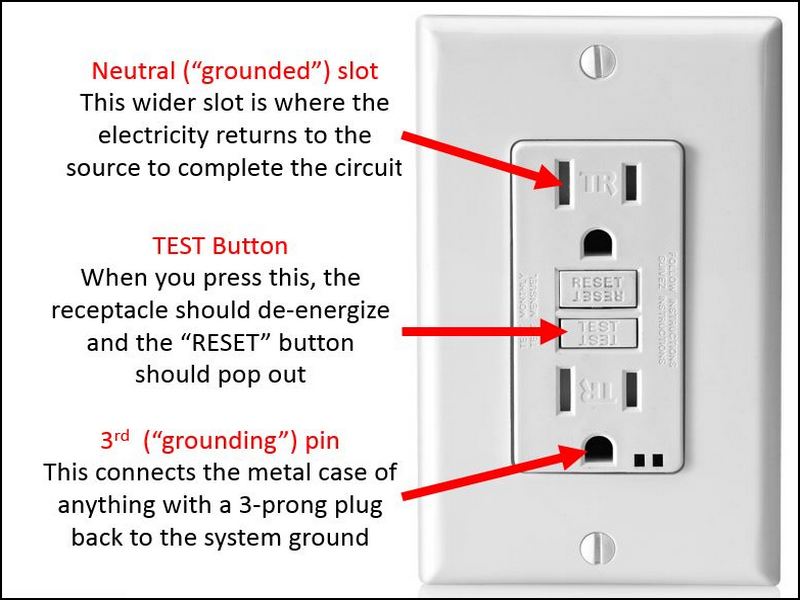
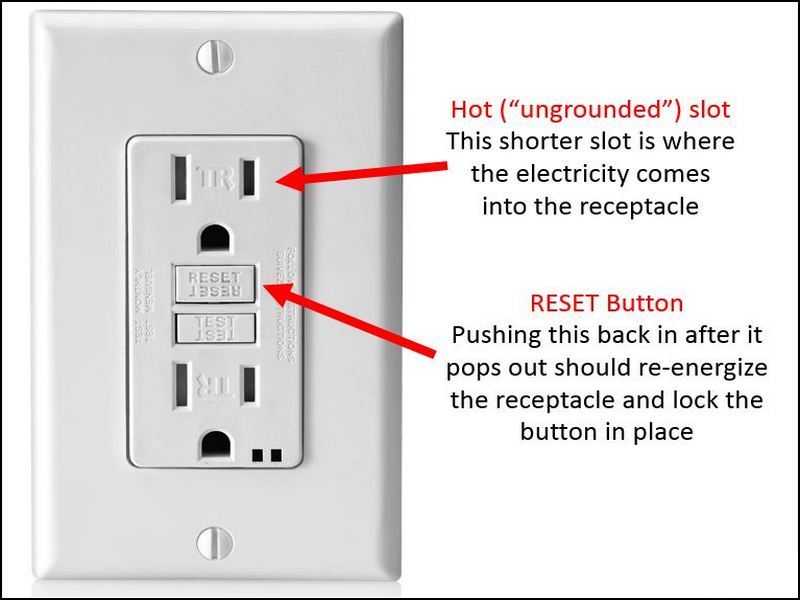
Ungrounded 3-Prong Receptacles
This means that the 3rd. “grounded” pin is not connected. A GFCI receptacle DOES NOT require a grounded 3rd. pin to operate correctly. In most jurisdictions this an acceptable fix for 2-prong receptacles. However, in this case the receptacle must be marked “No Equipment Ground.”
Most testers cannot properly test an ungrounded receptacle’s GFCI function. The tester’s lights may light up, but the receptacle will not trip and de-energize. Instead, follow normal homeowner test procedure. Use the receptacle‘s “TEST” button. Confirm that the receptacle has de-energized and the “RESET” button has popped out. Press the “RESET” button; it should lock in place. Use the tester to ensure the receptacle is re-energized.
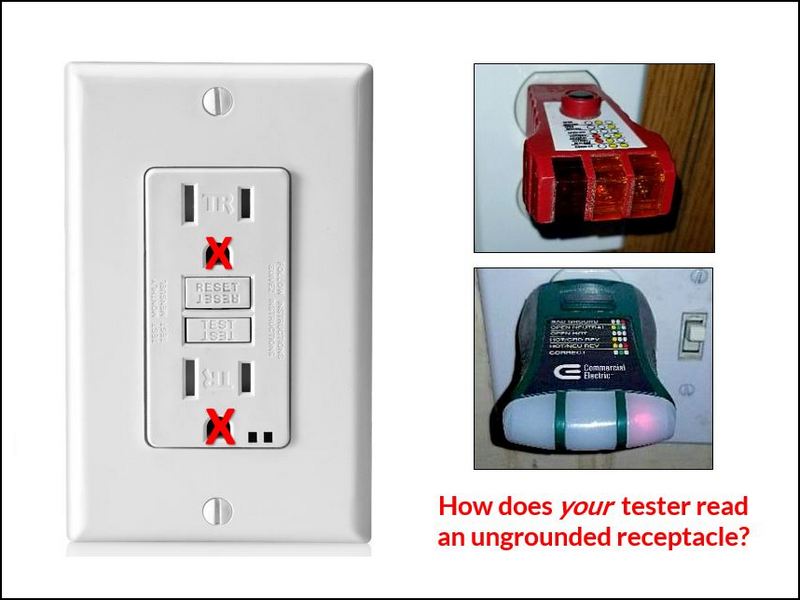
Reversed Polarity Receptacles
In this error, the black (hot) and white (neutral) wires are attached to the wrong slots. They are “reversed” from the correct connections. This is a shock hazard. It can also damage electronic equipment.

